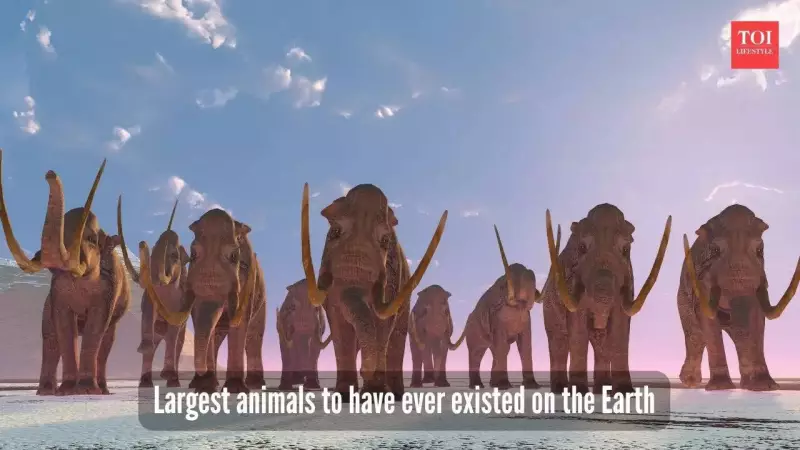
Our planet has witnessed some truly gigantic creatures throughout its history, with only one of these colossal beings still swimming in our oceans today. These magnificent animals represent evolutionary marvels that adapted to their environments over millions of years, overcoming challenges like predators, food competition, and habitat limitations.
The Titans of Earth's History
Studying these enormous creatures provides valuable insights into Earth's prehistoric past and helps us understand biological innovations and ecological roles. These giants pushed the boundaries of size in their respective environments, from land to sea. Here are five of the largest animals ever to inhabit our planet, according to Forbes.
Blue Whale: The Living Giant
The blue whale holds the title of the largest animal ever known to exist, and remarkably, it still swims in oceans worldwide today. Growing up to 30 meters long and weighing as much as 200 tons, this marine mammal surpasses even the largest dinosaurs in sheer size. Its gigantism evolved as an adaptation to ocean life, where water buoyancy supports enormous bodies.
Despite their massive proportions, blue whales feed almost exclusively on tiny krill, consuming several tons of these small crustaceans daily. Beyond their impressive dimensions, their ecological role proves vital to marine ecosystems. They help fertilize oceans with iron-rich waste and contribute significantly to carbon cycling, supporting both marine life and climate balance.
Argentinosaurus: The Colossal Herbivore
Argentinosaurus ranked among the largest land animals to have ever lived during the Mesozoic Period. This massive titanosaurian dinosaur measured between 30 to 35 meters in length and weighed an estimated 70-100 tons. As a herbivore, its enormous size likely served as protection against predators and allowed it to reach vegetation other animals couldn't access.
Its gigantic frame required special physiological adaptations in its bones and cardiovascular system to support life on land. The sheer scale of this dinosaur continues to astonish paleontologists and enthusiasts alike, demonstrating the extreme possibilities of terrestrial evolution.
Patagotitan: The Lightweight Giant
A close relative of Argentinosaurus, Patagotitan reached approximately 37 meters in length and weighed between 60 to 70 tons. This dinosaur's skeleton featured pneumatic bones - lightweight but strong structures containing air sacs that reduced weight without sacrificing strength.
This evolutionary innovation enabled it to grow to sizes unimaginable for most terrestrial animals. The unique bone structure of Patagotitan represents one of nature's most clever solutions to the challenges of supporting massive weight on land.
Megalodon: The Apex Predator
The megalodon was an enormous prehistoric shark that ruled as the ocean's apex predator between 23 to 3.6 million years ago. Measuring 16 to 18 meters long and weighing 40 to 60 tons, it was the largest predatory fish to have ever lived.
Its massive jaws and serrated teeth allowed it to prey on large marine mammals, including whales. Today, its fossilized teeth remain a rich source of information about this fearsome predator that once dominated ancient seas.
Spinosaurus: The Semi-Aquatic Hunter
Spinosaurus was one of the largest carnivorous dinosaurs, measuring 15 to 18 meters long and weighing between 7 to 20 tons. What made this predator unique was its semi-aquatic lifestyle, possessing paddle-shaped feet and dense bones that allowed it to spend much of its life in water hunting fish.
This adaptation sets it apart from other large meat-eating dinosaurs and expands our understanding of dinosaur ecology. The Spinosaurus demonstrates how dinosaurs evolved to occupy diverse ecological niches, including aquatic environments.
Lessons from Earth's Giants
These magnificent creatures teach us about the extremes of evolution and adaptation. While most of these giants are now extinct, the blue whale continues to roam our oceans, reminding us of nature's incredible capacity for creating life on a grand scale.
Understanding these ancient and modern giants helps us appreciate the delicate balance of ecosystems and the importance of conservation efforts, particularly for species like the blue whale that still share our world today.





